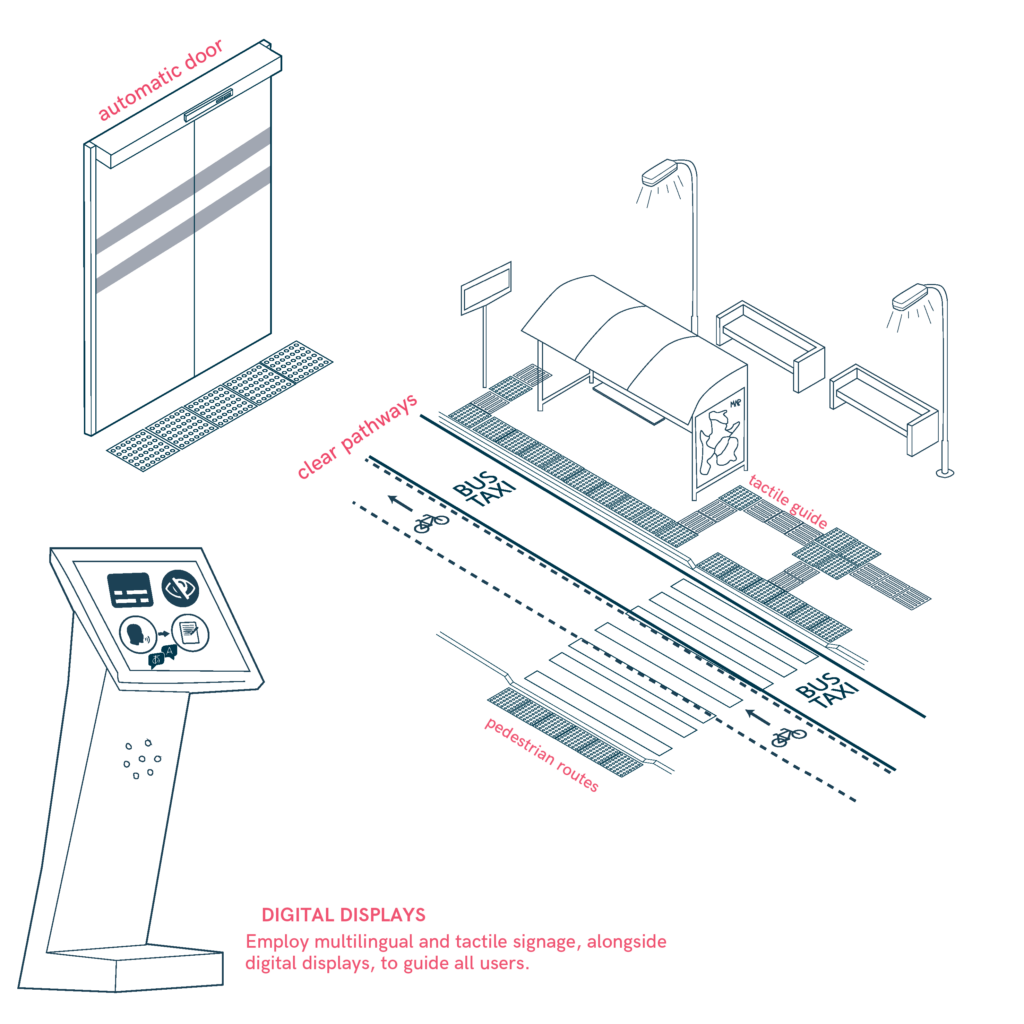Design for Everyone’s Journey
Mobility hubs serve as central connectors within transportation networks, blending various modes of transport into a unified, accessible system. The design focus on universal accessibility ensures that people of all abilities can move effortlessly between different travel modes.

- Provide wide, automatic doors with step-free access at all hub entry points.
- Position stops near pedestrian routes, integrating ramps and tactile paving for seamless access.
- Employ multilingual and tactile signage, alongside digital displays, to guide all users.
- Include comfortable seating with backrests and armrests near key transfer points.
- Design clear pathways for easy transitions between personal mobility vehicles, bicycles, and public transport.
Sources
- https://accessible-eu-centre.ec.europa.eu/content-corner/digital-library/en-172102021-accessibility-and-usability-built-environment-functional-requirements_en
- https://www.iso.org/standard/71860.html
- https://www.t-l.ch/collectivites/guide-des-amenagements-pour-les-transports-publics-routiers-tl/
- https://www.leitfadenbarrierefreiesbauen.de/fileadmin/downloads/archiv/barrierefreies_bauen_leitfaden_en_bf_version2.pdf
- https://www.vitoria-gasteiz.org/http/wb021/contenidosEstaticos/especial/cea/20190917/Avance_PMSEP_2020_2030.pdf
- https://www.punt6.org/es/books/espacios-para-la-vida-cotidiana/
- Carers
- Children
- Cognitive
- Cognitive abilities
- Decolonial perspective
- Digital
- Digital barrier
- Enviroment
- Environmental
- Gender and generations
- Gender perspective
- Hearing impairment
- Low-education
- Low-income
- Older people
- Other
- Physical abilities and features
- Sensory and Physical
- Socioeconomic
- Visual impairment